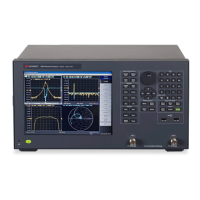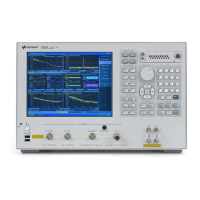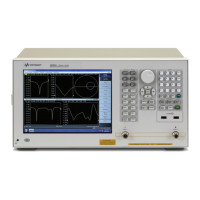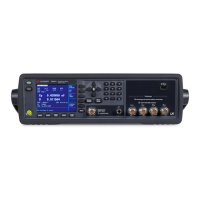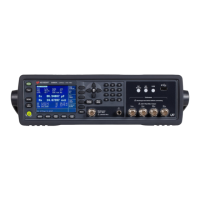39
Disturbance Analyzer (Click) Measurements
Setup Table Menu Features
Click Rate
The click rate (N) is the key metric used to determine the click limit Lq. The click
rate is determined by counting the number of clicks per minute. The determination
of N is based on whether you are using continuous operation or switching cycles to
collect clicks. For devices that operate continuously:
N = n1/T,
where n1 = number of clicks during the operation time
T = observation time.
For certain appliances requiring switching operations as defined in CISPR 14-1,
Annex A, N is calculated as:
N= (n2 * f)/T,
where n2 = number of switching operations during the operation time
f = factor given in CISPR 14 Annex A.
CISPR 14-1 requires that the click rate N be determined at:
• 150 kHz for measurements in the frequency range of
148.5 kHz - 500 kHz
• 500 kHz for measurements in the frequency range of
500 kHz - 30 MHz.
In this application you have two choices of click rate to be used to determine the
click limit:
• MEASURED - the click rate measured from the particular signal under test,
using the formulas listed above, or;
• USER - a manually-entered click rate
Duration
Enables you to set the duration of the measurement.
Correction
This feature enables you to offset the amplitude of all measured values by the value
you enter.
Click Count
This feature enables you to use a fixed number of clicks to terminate the click data
collection cycle. The measurement will use both the number entered and the set
measurement duration as terminators for data collection.

